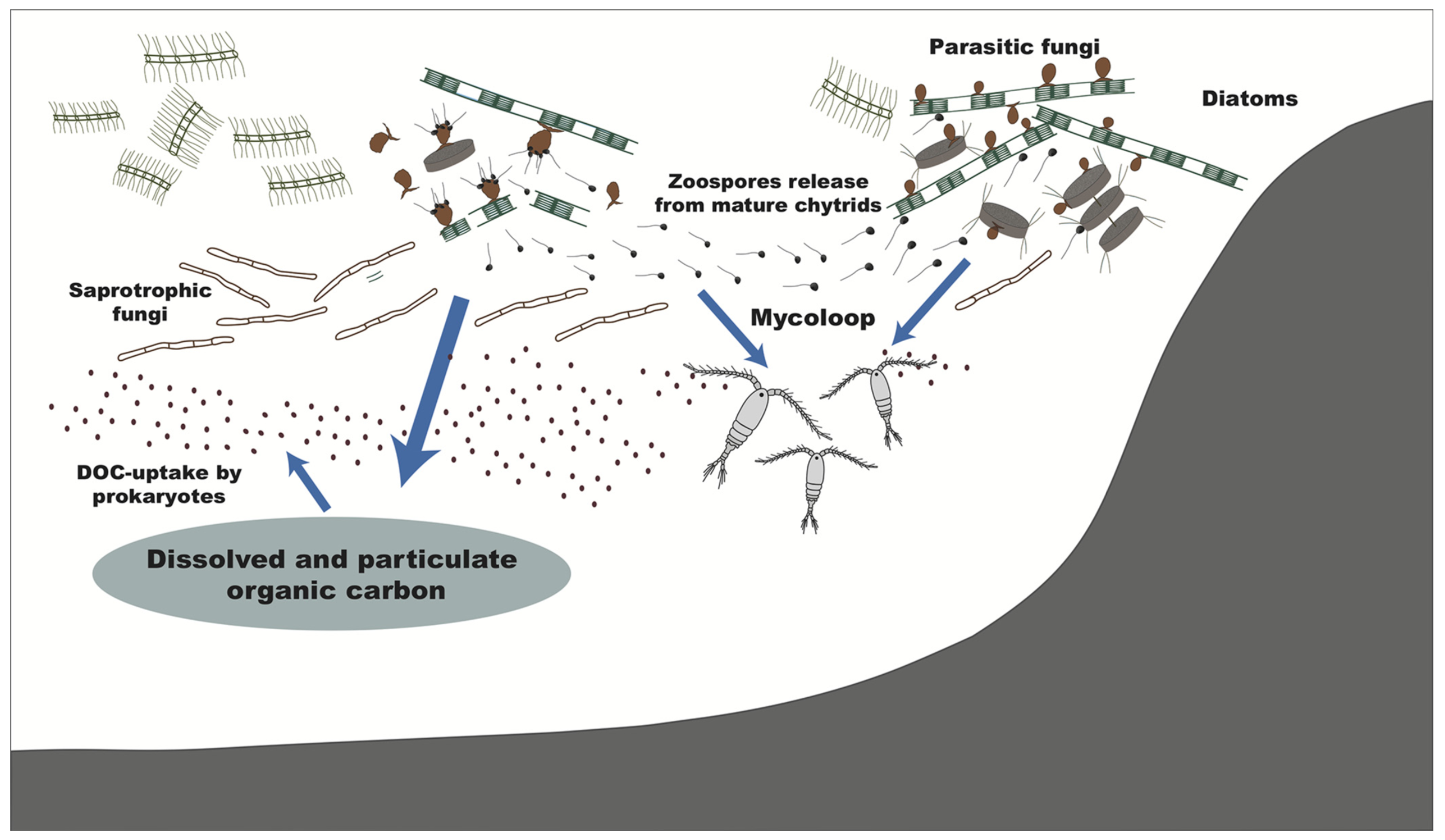From the forest floor, to your kitchen sink, fungi are everywhere. These organisms aren’t just inert eukaryotes that simply skate by either. Quite oppositely, they tend to be rather essential to the ecological and biochemical functioning in every habitat they live in. With that being said, very little is known about the fungi that inhabit our oceans, you know, just an area consisting of about 75% of our planet’s surface! In just a handful of years, researchers from around the world have gone above and beyond, filling in the major holes of our infinitesimal understanding of marine fungi. But still, there is a ridiculous amount of undescribed marine fungal species, interactions and biochemical processes we don’t know about. We are just taking the first steps at understanding our oceans through a mycological lens.
When I think about fungi, the first thing that comes to mind are large mushrooms fruiting from the ground, or the fresh, acrid smell of mycelia breaking down a dead tree in a nearby forest. We all tend to do this. Since we don’t live in and interact with marine environments, we don’t associate fungi with them. This is a fallacy in our mindset because as it turns out, fungi are just as integral to marine environments as they are in terrestrial ones. And this should not be a surprise to us since the fungal Kingdom first evolved in these marine ecosystems.
The habitat that some of the first fungi on Earth inhabited.
A 2017 study published in Nature in by Bengtson et al. analyzed core samples from the 900-m-thick basalt Ongeluk Formation from the Griquatown West Basin in South Africa. The researchers recognized the fossilized networks of what resembled fungal filaments. Prior to this publication, it has been clearly understood that certain network forming fungi inhabit deep sea ocean sediments, sometimes several kilometers beneath the bottom of the ocean. What shook the mycological world was this Ongeluk Formation was dated at 2.4 billion years! This meant that fungi originated nearly 1.5 billion years before what we originally thought!
The actual fossilized structures. Bengtson et al. 2017.
This Kingdom had an oceanic origin so it should be no surprise that they play a substantial role throughout the marine system. Like nearly all live here on Earth getting a start in marine environments, some descendants made their way into terrestrial habitats. Newer research points to a novel evolutionary trajectory of marine fungi similar to whale evolution; organisms with ancestors that originated in the seas, moving to land only to transition back to the seas. In 2009, Schoch et al.found that this terrestrial to marine transition in fungi has occurred multiple times over. Other studiesthat have found the same species of fungi living in both terrestrial and marine environments highlight the adaptability of fungi, and reveal that certain species truly are amphibious.
Describing one interaction between marine fungi and another marine organism will not do this topic justice. It’s imperative to realize that marine fungi interact with the base of the food chain. Any interaction at the base of the food chain can and will radiate up and have a long-lasting impact on the system from both an organismal and biochemical standpoint. Some marine fungi may increase primary productivity, while others may decrease primary productivity.
Roles of fungi in the marine carbon cycle by processing phytoplankton-derived organic matter. Parasitic fungi, as well as saprotrophic fungi, directly assimilate phytoplankton organic carbon. By releasing zoospores, the fungi bridge the trophic linkage to zooplankton, known as the mycoloop. By modifying the particulate and dissolved organic carbon, they can affect bacteria and the microbial loop. These processes may modify marine snow chemical composition and the subsequent functioning of the biological carbon pump. Amend et al. 2019.
An ancient lineage of fungi that never really got a foothold on terrestrial habitats known as the chytrids are some of the most prominent group of fungal pathogens in marine environments. These chytrid fungi infect phytoplankton and make them more susceptible to predation by zooplankton. Furthermore, a recent analysis of zooplankton gut contents reveal that marine fungi make up a substantial proportion of their diet. It’s hard to say if these cooccurring interactions are positive or negative, which further shows what early stage we are in in the marine mycology subdiscipline.
Marine fungal parasites like the chytrids, and saprotrophic species engage in biochemical interactions, release nutrients locked up in large biomolecules. As these fungi process phytoplankton derived organic matter, carbon, nitrogen and phosphorus are become recycled. Additional biochemical interactions include the reduction of bacterial growth by fungal exudates. Fungal antibiotics evolved to help fungi compete against bacteria interested in the same food source. Fungal biomass thus indirectly influences a slew of biochemical interactions involved with bacterial functioning.
Fungal collection isolated from a marine sponge, Ircinia variabilis. Amend et al. 2019.
With all of the new fungal species being found and the cheaper, more accurate genomic techniques becoming available, modern mycology has proven to be an extremely dynamic branch of science. It seems like every time I turn my head some phylogenetic relationship is being rearranged. Very recently, research about marine fungi has surfaced which has had us scratching our heads. We are just starting to identify marine fungal interactions, and to be honest, ocean environments are so vast and interconnected we can’t even distinguish positive from negative interactions. But what we are realizing is that fungi are adaptive, extremely ancient organisms that heavily influence every ecosystem they live in. The phrase, “we know more about the Moon than our oceans” could not be truer.






